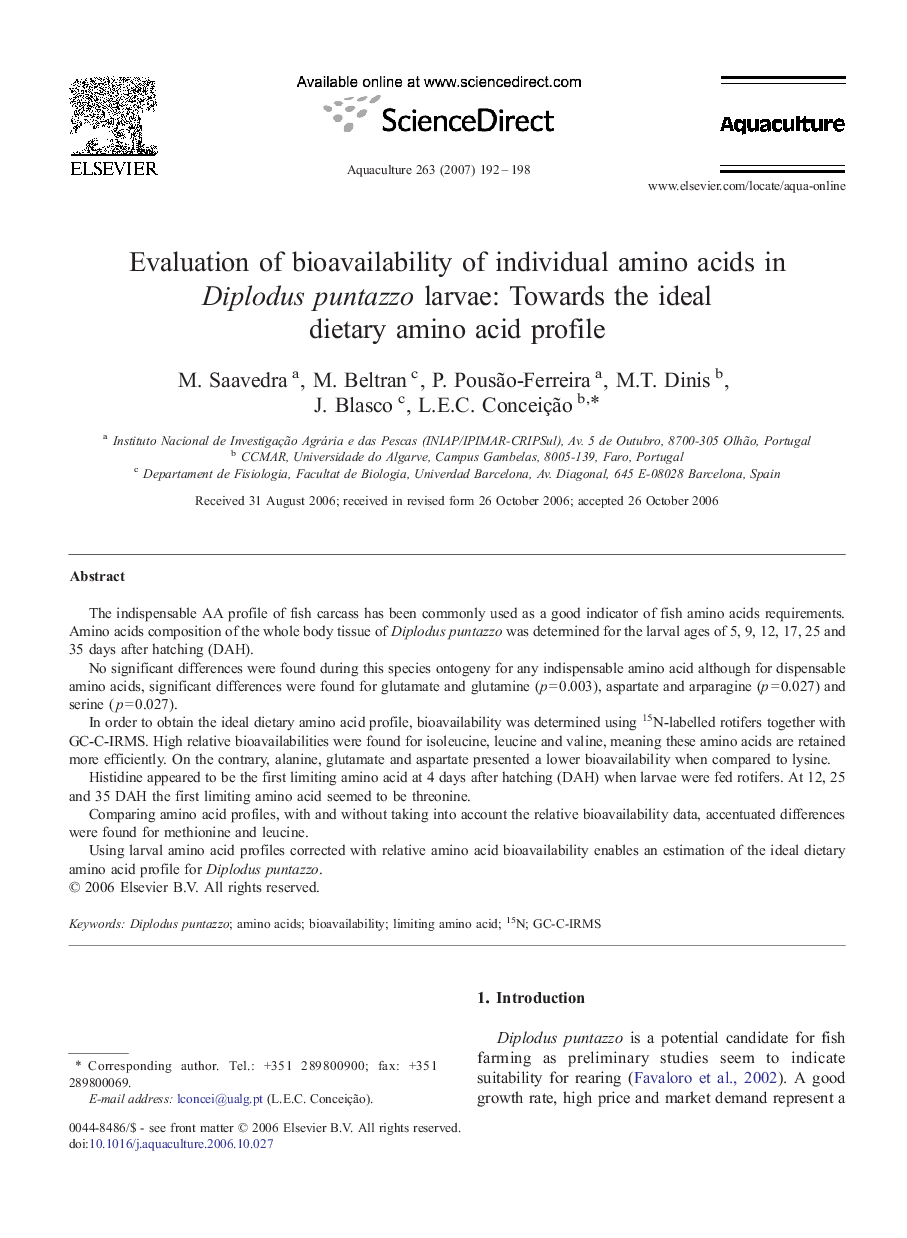| Article ID | Journal | Published Year | Pages | File Type |
|---|---|---|---|---|
| 2425558 | Aquaculture | 2007 | 7 Pages |
The indispensable AA profile of fish carcass has been commonly used as a good indicator of fish amino acids requirements. Amino acids composition of the whole body tissue of Diplodus puntazzo was determined for the larval ages of 5, 9, 12, 17, 25 and 35 days after hatching (DAH).No significant differences were found during this species ontogeny for any indispensable amino acid although for dispensable amino acids, significant differences were found for glutamate and glutamine (p = 0.003), aspartate and arparagine (p = 0.027) and serine (p = 0.027).In order to obtain the ideal dietary amino acid profile, bioavailability was determined using 15N-labelled rotifers together with GC-C-IRMS. High relative bioavailabilities were found for isoleucine, leucine and valine, meaning these amino acids are retained more efficiently. On the contrary, alanine, glutamate and aspartate presented a lower bioavailability when compared to lysine.Histidine appeared to be the first limiting amino acid at 4 days after hatching (DAH) when larvae were fed rotifers. At 12, 25 and 35 DAH the first limiting amino acid seemed to be threonine.Comparing amino acid profiles, with and without taking into account the relative bioavailability data, accentuated differences were found for methionine and leucine.Using larval amino acid profiles corrected with relative amino acid bioavailability enables an estimation of the ideal dietary amino acid profile for Diplodus puntazzo.
